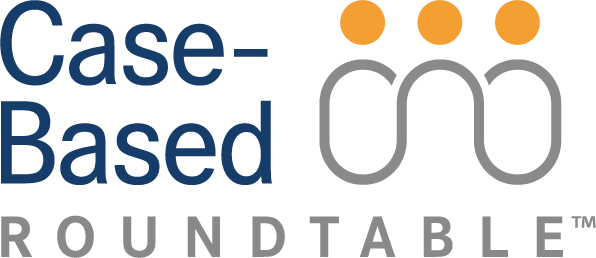Single-Agent Talquetamab Stands Out in Later-Line Treatment of RRMM

In the second article of a 2-part series, Amrita Krishnan, MD, looks at the overall landscape of treatment for patients with relapsed/refractory multiple myeloma and how the use of single-agent talquetamab stands out in comparison with other treatment options.
CASE SUMMARY
A 74-year-old woman was diagnosed with stage II IgG-λ multiple myeloma in 2017 and initially underwent triplet therapy of lenalidomide (Revlimid), bortezomib (Velcade), and dexamethasone as induction therapy then had an autologous stem cell transplant. The patient achieved a very good partial response (VGPR) for 2 years. The patient first relapsed in 2019 and came back to her physician with complaints of mid back pain, constipation, and intermittent episodes of paresthesia in her upper extremities. She underwent 28-day treatment of daratumumab (Darzalex), carfilzomib (Kyprolis), and dexamethasone (DKd) and saw a decrease in her platelet count to 140 x 109/L from 160 x 109/L seen in 2017.
Eight months later in May of 2020, she relapsed again and reported more pain. Fluorescence in situ hybridization was positive for MYC translocation and she was given a third-line therapy of primary ciliary dyskinesia and had a partial response with minor reductions in her hemoglobin levels and platelet count. However, she experienced a third relapse in June 2021 and further uptake noted at L1-L3 and new soft tissue lesions on left seventh and eighth ribs was found in another fluorodeoxyglucose PET/CT scan. Along with radiotherapy, she was given 4 cycles of selinexor (Xpovio), bortezomib, and dexamethasone (SVd), but still relapsed with high B-cell maturation antigen levels at 67%. Chimeric antigen receptor (CAR) T-cell therapy was declined due to deteriorating renal cell function.
Talquetamab (Talvey) was initiated after the fourth relapse and step-up dosing was initiated every 3 days and 0.8 mg/kg given every 2 weeks until disease progression or unacceptable toxicity. She achieved a VGPR on therapy and had a mild rash. At a 12-month follow-up, she maintained her response without progressive disease or a reduction in CD19 B-cells. She is continuing the full dose of talquetamab every 2 weeks.
Targeted Oncology: How does the overall survival (OS) results with talquetamab fit into treatment for patients with relapsed/refractory multiple myeloma?
Amrita Krishnan, MD: We [saw in the TRiMM-2 trial (NCT04108195)] that the 12-month OS rate was...pretty good at 92.3% [95% CI, 56.6%-98.9%].1 Why we're so excited [about these results with talquetamab is because] when you have 7 relapses in patients with multiple myeloma, you never expect to get a response over 20% with any single-agent drug. The thing is, myeloma is different than other diseases, because we never use the word cure with patients, even from the beginning and the idea that patients are on continuous therapy [is different from other disease types].
All those factors, I think, make myeloma a different disease in the way we treat it, and the patterns of relapse [are unique]. It's hard for me to speak to other diseases, but all I can say is this idea of clonal evolution and disease mutation happening relatively quickly is part of the [unique] challenges of the disease.
Why is it that many treatments for multiple myeloma are adopted early?
We are very quick and early adopters [of therapies in this space] for several reasons. Myeloma is a rare disease, and we are doing the phase 3 trials—for instance we have MAJESTEC-3 [NCT05083169] going on right now to further evaluate the combination of teclistamab-cqyv [Tecvayli] and daratumumab.2 However, if we wait for [the results of that study] we are going to be waiting a lot longer [to treat patients with novel therapies.
[We only just] had results for the phase 3 CARTITUDE-4 trial [NCT04181827], which was ciltacabtagene autoleucel [cilta-cel] vs standard of care, and it showed a tremendous PFS benefit with cilta-cel at [12 months with a 75.9% rate (95% CI, 69.4%-81.1%)].3 Still, sequencing remains challenging [with all these therapies] and it’s still very much dealers choice in some cases.
Why do sequencing challenges remain in this space? Especially for patients with relapsed/refractory disease.
I think the problem is the way [some of the] drugs are approved. Use after 4 lines of therapy is a [challenging way to approach some of these treatments]...because it often doesn't reflect our situation. You can sometimes have a patient whose triple class refractory after 1 line of therapy vs someone else [who is refractory after several lines].
References:
1. Chari A, Minnema MC, Berdeja JG, et al. Talquetamab, a T-cell-redirecting GPRC5D bispecific antibody for multiple myeloma. N Engl J Med. 2022 Dec 15;387(24):2232-2244. doi:10.1056/NEJMoa2204591
2. Mateos MV, Bahlis N, Costa L, et al. Pb2020: majestec-3: randomized, phase 3 study of teclistamab plus daratumumab versus DPD or DVD in patients with relapsed/refractory multiple myeloma. Hemasphere. 2022;6(Suppl ):1891-1892. doi:10.1097/01.HS9.0000850912.43010.d3
3. San-Miguel J, Dhakal B, Yong K, et al. Cilta-cel or standard care in lenalidomide-refractory multiple myeloma. N Engl J Med. 2023; 389:335-347. doi:10.1056/NEJMoa2303379





































